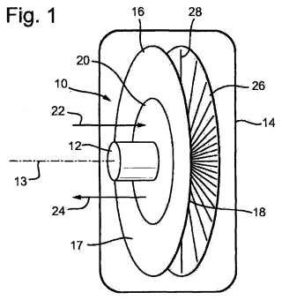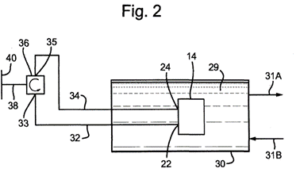Although demand for heat energy is currently greater than for electricity, energy generated by wind, solar and other renewable devices is almost exclusively geared towards producing electricity. The electricity produced from these renewable energy sources is then converted into heat using heat pump technology or an electric boiler, for example. However, this type of heat generation is inefficient, at present.
Eddy current heaters have considerable potential as a more efficient means of generating heat for homes and industry from renewables. Such heaters work by directly converting the mechanical energy of a rotating disk (often driven by a wind or water turbine) in a fixed magnetic field, into heat using eddy currents.
Unfortunately, eddy current heaters often do not operate as efficiently as they could do due to poor heat transfer from the conductor, which can lead to the conductor overheating. Moreover, due to their size and cost, existing eddy current heaters may be unsuitable for smaller domestic heat generation systems.
Rotaheat, a UK-based company, has recently been granted a UK patent (GB2532443) for a new design of eddy current heater, which is easy and inexpensive to store, and offers a highly efficient solution for the generation of heat.
The heater uses eddy currents in a conducting disc (16) which is driven in relative rotation with a magnet (28) to generate heat. As the conductor shears the magnetic field created by the magnet, heat is generated in the conductor (20) by induction. This heat is then stored in a heat transfer fluid (29) to be used later.

This offers a simple and highly efficient solution for the generation of heat, which delivers significantly higher yield at a lower cost than electrified heating solutions. It also enables the production of renewable energy from sites with grid connectivity constraints. In contrast to earlier eddy current heaters, it is not necessary to lag the case or to keep it watertight, greatly reducing the cost of the generator system.
Rotaheat’s UK patent means it is able to prevent competitors from manufacturing, importing and even marketing eddy current heaters that include this innovative arrangement of the conducting disc and magnet. Given the recent push for the development of low carbon solutions for heating, Rotaheat’s patent could prove to be a highly valuable asset, providing them with up to 20 years’ exclusivity in the UK, and may help them to gain market share for the supply of clean heat to sectors including residential, agriculture and industry.
Mark Sugden is a UK and European patent attorney leading the Housing & Construction group at European intellectual property firm, Withers & Rogers.
If you would like to read more stories like this, then please click here
The post Eddy currents: Turning-up Heat Generation appeared first on UK Construction Online.

Walang komento:
Mag-post ng isang Komento